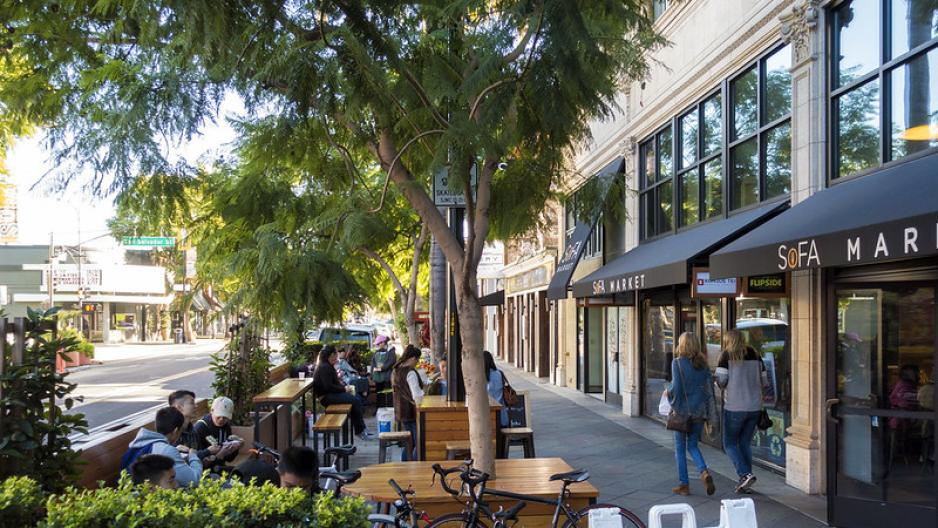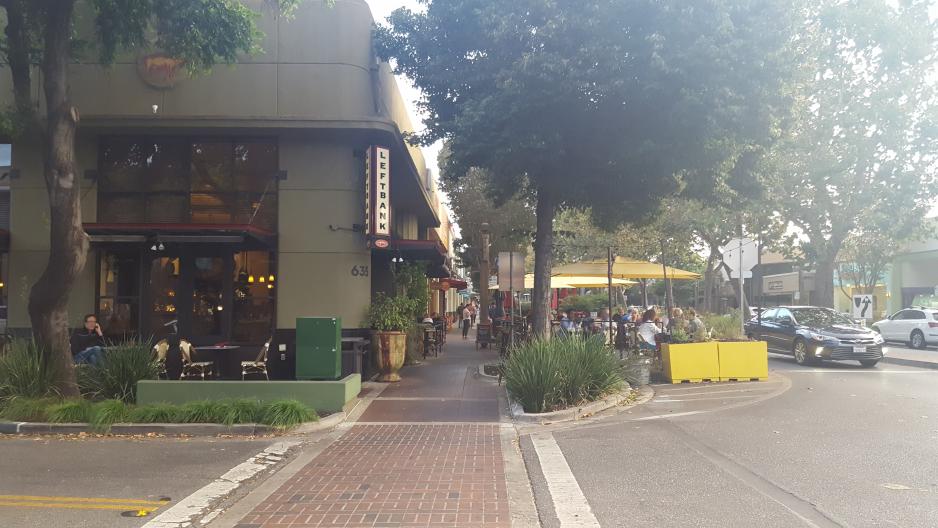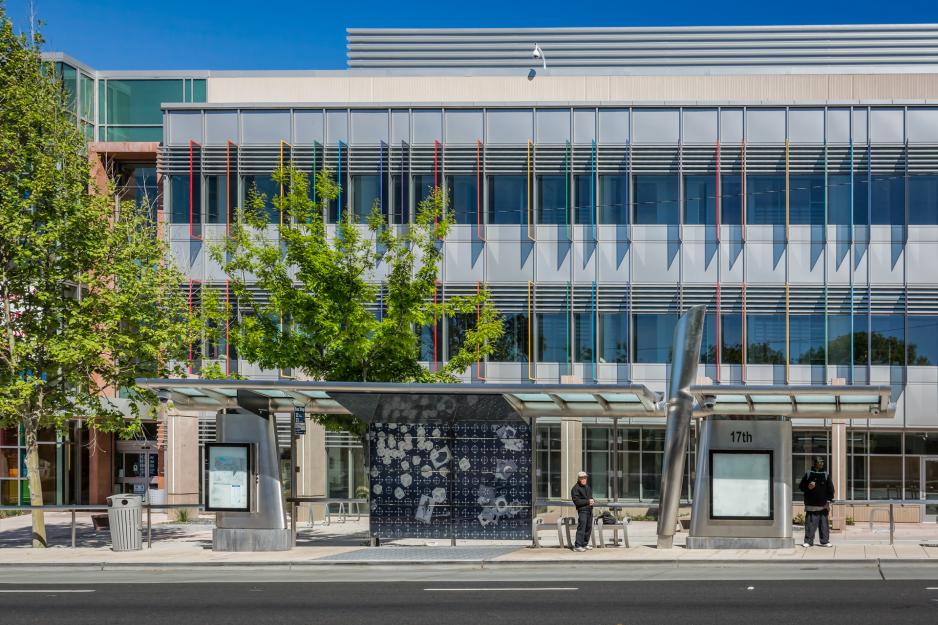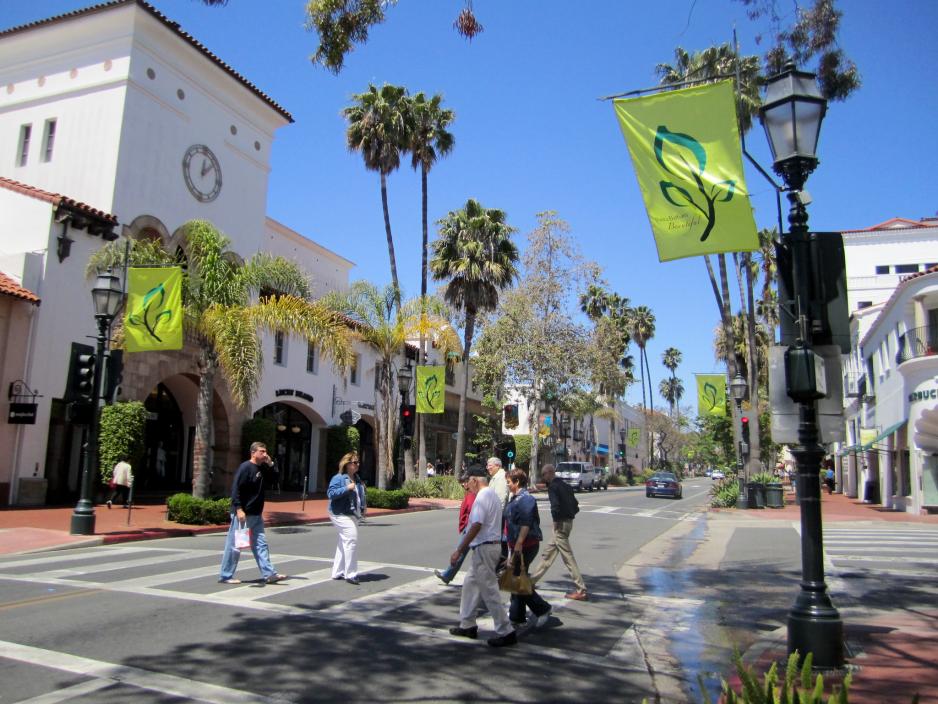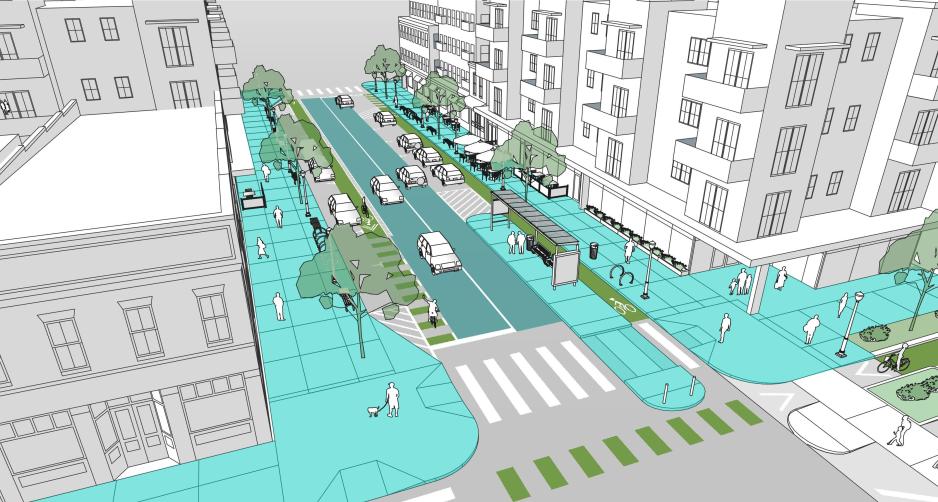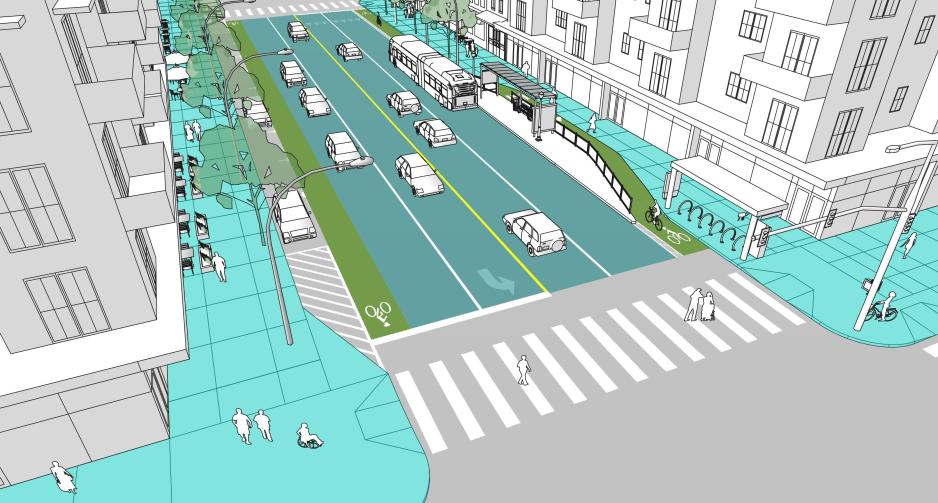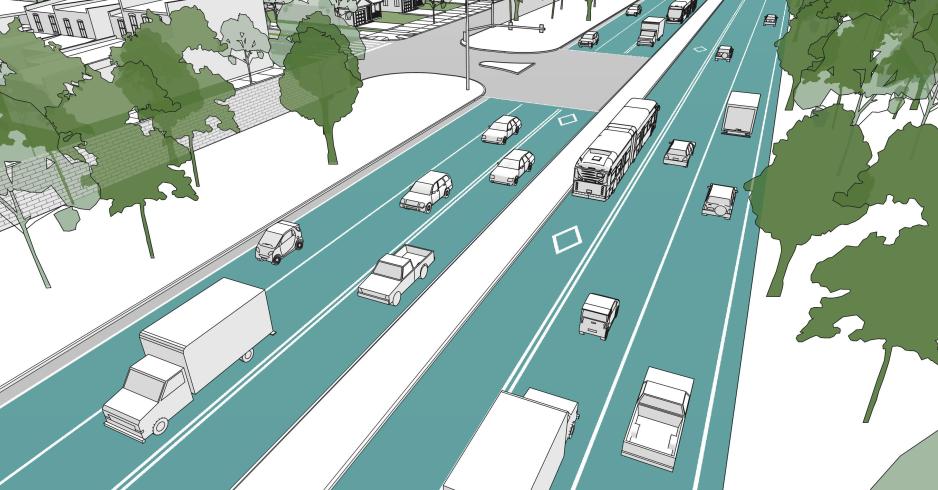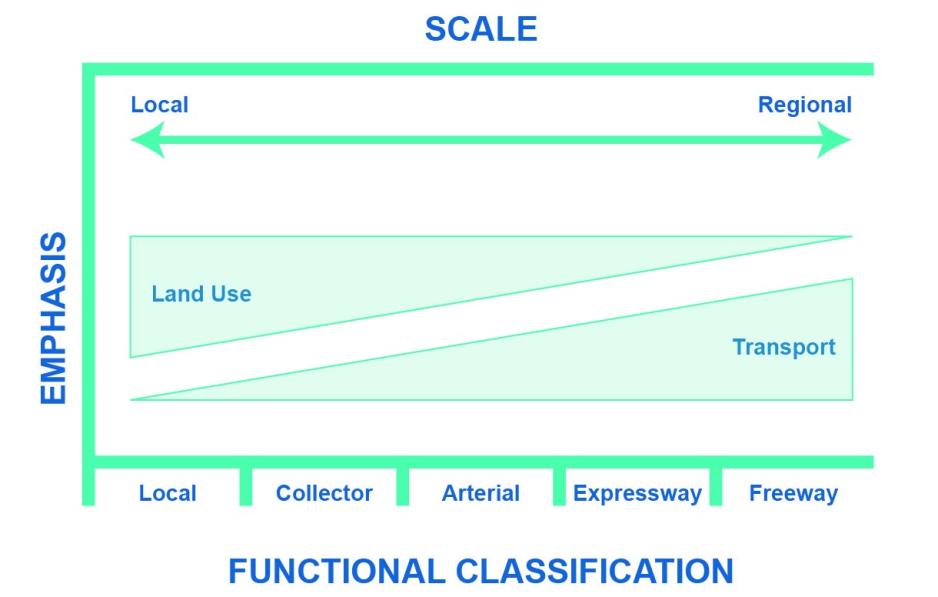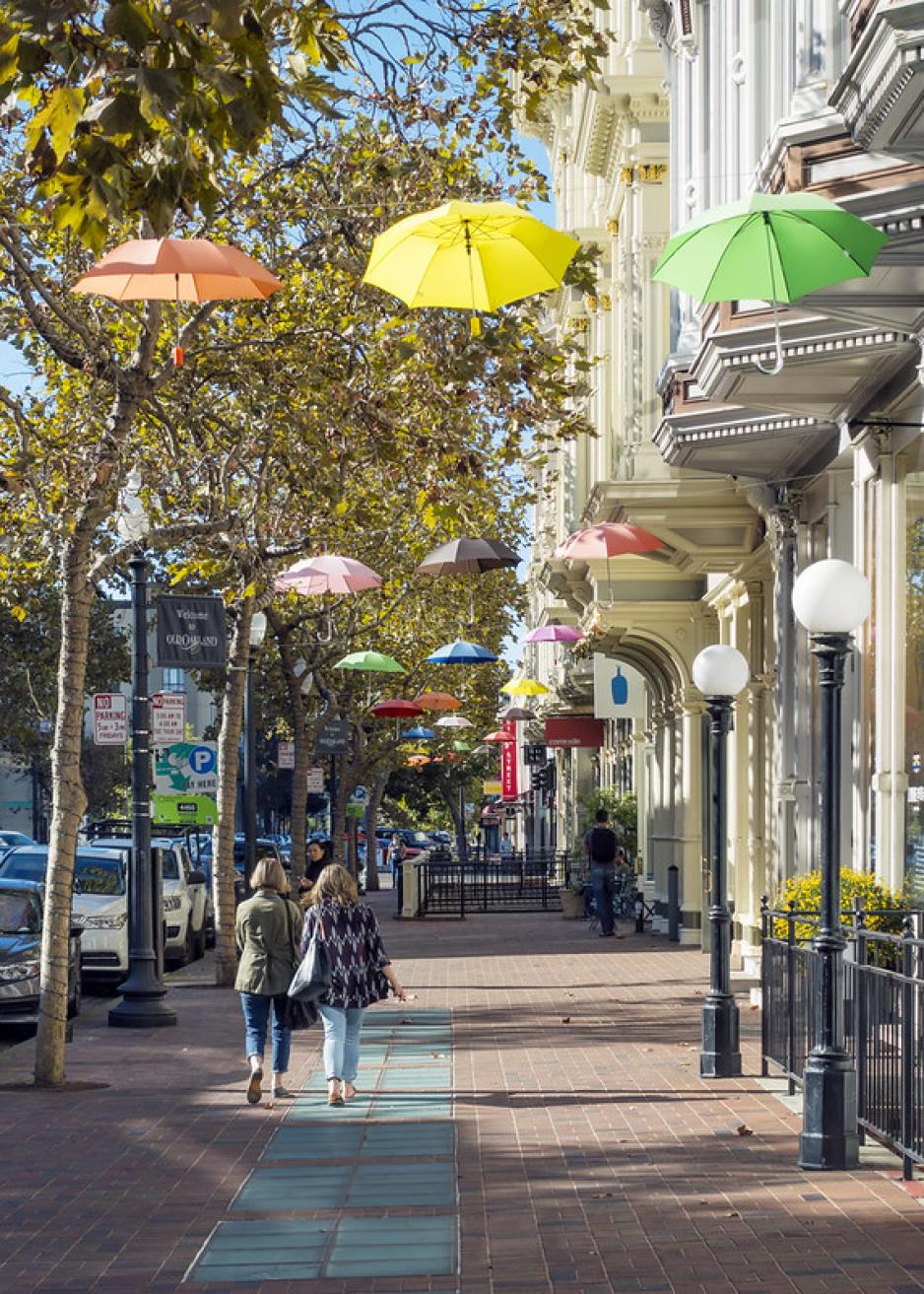Design streets that support local land use and respond to local context.
Streets are places. Streets provide the spaces that people inhabit when they are in between the private and other public spaces of the community. They provide a network for the vital social, economic, and physical activities of our communities. Street design affects people’s perceptions of a place and largely determines the livability of our communities.
- Design streets to have a clear sense of place, establishing a street with its own brand/identity.
- Associated transit stop design should balance transit brand identity with street identity as a wayfinding tool for transit riders. VTA’s Transit Passenger Environment Plan includes guidelines for a “Community Destination” bus stop typology. Local jurisdictions may provide custom shelter and amenities to reflect a locally important destination.
Streets nest into the scaled nature of land use. Local and collector streets are land uses that fill in between buildings and sites. Arterial streets can serve as corridor spaces, which connect districts, in the land use sense.
The balance of land use and transport is based on the scale of the street. Local streets and collectors should emphasize designs that support placemaking. Arterials should have a balanced emphasis between placemaking and transportation. Regional expressways and freeways should emphasize designs that support mobility and transportation.
Begin with the pedestrian in mind. Designing streets for pedestrian comfort and convenience is the strongest way to ensure a street has been designed to fulfill its land use role. To be successful as a place, streets must be comfortable for pedestrians, connected to fine-grained pedestrian networks, and include pedestrian-scale street elements, such as lighting and other amenities.
